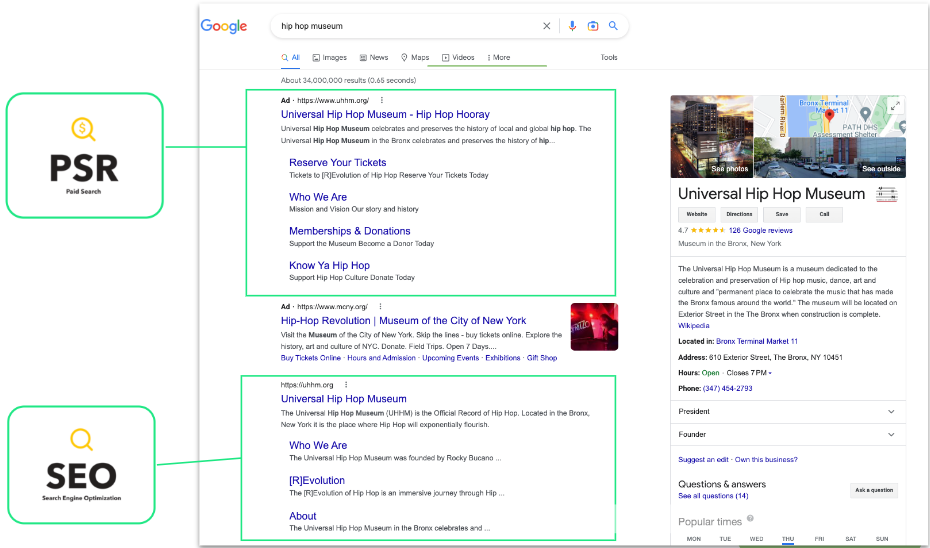
Integrated Search Marketing Strategy
Integrated search marketing creates synergy between all search touchpoints of the user journey to communicate with your target audience effectively. This is an important approach for businesses utilizing multiple marketing channels like SEO, SEM, and social media. If each of these channels is siloed from the other, then it’s likely that all three will be underperforming.
There’s also an opportunity to consider integrated search to help inform your SEO strategy even if you aren’t actively pursuing SEM campaigns. In this blog, I’ll provide a high-level overview of what to consider when creating an integrated search marketing strategy.
The Benefits of Integrated Search
An integrated search strategy maximizes your brand’s visibility on search engines. It provides crucial cost efficiencies and improved user experiences that are hard to achieve when SEO and SEM operate independently. There are many benefits to pursuing an integrated search marketing strategy, but here are a few:
- Increased Visibility Across Channels: By combining organic and paid search, your brand can dominate more areas of the search engine results page (SERP), ensuring consistent presence, whether through organic rankings or paid ads.
- Cost Efficiency: Integrated search helps reduce paid advertising costs by identifying keywords that rank well organically, allowing you to cut unnecessary ad spend and reinvest in underperforming areas.
- Better Data-Driven Decisions: Integrated search provides a comprehensive view of how different keywords and campaigns perform across organic and paid channels, allowing for more innovative, data-driven optimizations.
- Enhanced Brand Credibility: Appearing in both paid and organic results boosts consumer trust and brand credibility, as users are more likely to engage with brands that dominate multiple search placements.

One of our clients, the Universal Hip Hop Museum, has enhanced its brand credibility by dominating the paid and organic search real estate for its branded keywords. Some companies only focus on getting the number one organic spot for their brand, leaving a window of opportunity for competitors to bid on their brand name and rank in the paid results when someone searches for the brand. This can lead to lost customers. On the other hand, if a company only focuses on securing the paid search spot for their brand, then they are likely to have a hard time succeeding as a business if their website is nowhere to be found in the organic results.

Another one of our clients, Resort World Casino, effectively dominated the SERPs for some non-brand keywords by implementing an integrated search strategy. They rank number one in the paid search ads placement and in the local map pack, and they also rank number three and four for the standard organic search results for the search query “New York casinos.” This type of coverage helps ensure that potential customers are being exposed to Resort World Casino.
Key Components of an Integrated Search Strategy
There are several key components to creating an effective integrated search marketing strategy.
- Keyword Research Collaboration: Ensure keyword research is shared between SEO and SEM teams to identify high-performing terms that work across paid and organic efforts, leveraging data to optimize campaigns.
- Integrated Performance Dashboard: Use a centralized dashboard to monitor KPI performance across both SEO and SEM, focusing on keyword trends, conversion rate, CTR, and CPC for a holistic view.
- Bid Adjustments Based on Organic Rankings: Adjust PPC bids based on organic performance, reduce ad spend on keywords that rank well organically, and focus the budget on lower-performing terms.
- Consistent Content Calendar: Align SEO and paid search content calendars, ensuring content releases complement both channels and maximize visibility during key campaign periods.
- Collaboration with UX and CRO Teams: Collaborate with UX and CRO teams to improve site structure and user flows, ensuring that SEO and SEM traffic convert effectively.
- Social Media Integration: Incorporate social media into your search strategy, leveraging social platforms for content distribution, visibility, and link-building.
- Agility and Continuous Optimization: Regularly update and refine your integrated search strategy to stay ahead of algorithm changes, user behavior shifts, and emerging trends.
These components ensure your strategy is holistic, data-driven, and continuously optimized for maximum impact across all search channels.
Leveraging Paid Search Data to Strengthen SEO
Even if you’re only pursuing SEO right now, you can still utilize paid search data to help inform SEO decisions. For example, suppose you’re considering creating content to target a cluster of keywords, but the average CPC for that cluster is $50. In that case, you might want to consider if you have the necessary domain authority and EEAT (Expertise, Experience, Authoritativeness, and Trustworthiness) to rank for those keywords anytime soon.
Further research might reveal an equally valuable keyword cluster that has a much cheaper CPC, which could mean there is a better chance of ranking organically. These types of decisions need to be evaluated on a case-by-case basis.
Conversely, if you’re overseeing digital marketing strategy and focusing on paid search without SEO, you could build a compelling case for SEO by analyzing your paid search spend. Evaluating how much you’re spending on the keywords you’re bidding on could reveal significant cost savings if you could rank well for those terms organically. This analysis can show the long-term financial benefits of investing in SEO alongside paid campaigns.
Conclusion
If you have the necessary resources to pursue SEO, SEM, and social media marketing, then it’s worth creating synergy between all these channels to maximize ROI. Effective communication with your target audience across multiple touchpoints on their user journey is essential to have successful marketing campaigns.



